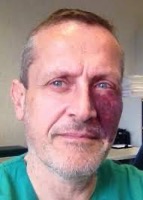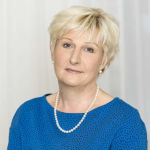Non-syndromic uro-recto-genital tract malformations refer to a group of congenital anomalies affecting the development of the urinary and/or reproductive systems that are not associated with any known genetic syndromes. These malformations can involve various parts of the urinary and/or reproductive tract, such as the kidneys, ureters, bladder, urethra, or genitals, and can present with a range of symptoms and severity levels. Diagnosis of non-syndromic uro-recto-genital tract malformations may involve imaging studies, genetic testing, and other diagnostic tests, and treatment may involve medical management, surgical interventions, or a combination of both. The cause of many non-syndromic uro-recto-genital tract malformations is not well understood, but may involve a combination of genetic and environmental factors. Dr Giovanni Mosiello is head of the paediatric Neuro-Urology and Surgery for Continence Division of the Bambino Gesù Children’s Hospital in Rome, Italy, which involves several academic activities with different universities in Rome (Sapienza, Campus BioMedico, Tor Vergata, UniCamillus) and the University of Genova. He is the Director of a training-host centre for Pediatric Urology recognised by the European Society of Pediatric Urology (ESPU), the European Association of Urology (EAU), and the Societe International d’Urologie (SIU). He has been a surgical tutor for paediatric urology in many countries worldwide. His clinical activity and research are focused on surgical reconstruction of the lower urinary tract in spina bifida, anorectal malformation, urogenital sinus, bladder exstrophy, posterior urethral valves, and for treatment of obstructive and refluxing megaureter, stones and hypospadias. Her special interest in Pediatric Urology is reconstructive surgery in neurogenic bladder dysfunction. AT Linz Ordensklinikum, BE Antwerp UZ, BE Leuven UZ, DE Munich LMUK, DE Leipzig UK, DE Mannheim UK, DE Regensburg UK, DE Tübingen UK, DE Ulm UK, DK Aarhus DNU, DK Copenhagen Rigshospitalet, ES Barcelona Sant Joan, ES Barcelona Vall d’Hebron, ES Madrid La Paz, ES Barcelona Fundació Puigvert, FI Helsinki HUS, FR Paris Necker, FR Paris Robert-Debré, IT Bergamo Papa Giovanni XXIII, IT Padua AOU, IT Turin AOU, IT Milan Policlinico, IT Rome Bambino Gesu, LT Vilnius SK, LV Riga BKUS, NL Rotterdam Erasmus, NL Nijmegen Radboudumc, NL Utrecht UMC, PL Gdansk MUG, PL Krakow USD, SE Stockholm Karolinska, SE Gothenburg Sahlgrenska, SE Lund SUS, SE Uppsala Akademiska The European Association of Urology, European Society for Paediatric Urology, ERN eUROGEN, ERN ITHACA, ERN ERKNet, and the International Federation for Spina Bifida and Hydrocephalus formed a working group to standardise the approach of care for paediatric patients with spinal dysraphism through the development of a Clinical Practice Guideline (CPG). The EAU Guidelines Office and EAU Paediatric Guidelines Panel led the process, ensuring that the methodology met the standards set by the EC as provided by the Aragon Health Sciences Institute (IACS) on behalf of the ERNs. The Memorandum of Understanding is available here, and the methodology is included in the appendices.EA 1.4 Non-Syndromic Uro-Recto-Genital Tract Malformation
Expertise Area Coordinator and Vice-EAC
Expertise Area Coordinator: Giovanni Mosiello
 Dr Giovanni Mosiello is the Workstream Lead for ERN eUROGEN’s Workstream 1 (rare congenital uro-recto-genital anomalies) and the Expertise Area Coordinator for EA 1.4, non-syndromic uro-recto-genital malformation. He is also the Chair of the cross-ERN (ERN EUROGEN, ERN ITHACA, and ERN ERKNet) Working Group on spina bifida and other dysraphisms (SBoD).
Dr Giovanni Mosiello is the Workstream Lead for ERN eUROGEN’s Workstream 1 (rare congenital uro-recto-genital anomalies) and the Expertise Area Coordinator for EA 1.4, non-syndromic uro-recto-genital malformation. He is also the Chair of the cross-ERN (ERN EUROGEN, ERN ITHACA, and ERN ERKNet) Working Group on spina bifida and other dysraphisms (SBoD).Vice-EAC: Kate Abrahamsson
 Prof. Kate Abrahamsson was the head of the Pediatric Surgery department at The Queen Silvia Children´s Hospital, Sahlgrenska University Hospital in Gothenburg, Sweden, from 2012 until 2022, when she became the head of the entire Children’s Hospital. She has been a Professor of Pediatric Surgery since 2015.
Prof. Kate Abrahamsson was the head of the Pediatric Surgery department at The Queen Silvia Children´s Hospital, Sahlgrenska University Hospital in Gothenburg, Sweden, from 2012 until 2022, when she became the head of the entire Children’s Hospital. She has been a Professor of Pediatric Surgery since 2015. Conditions and Codes
Healthcare Providers
Guidelines

Additional Resources

